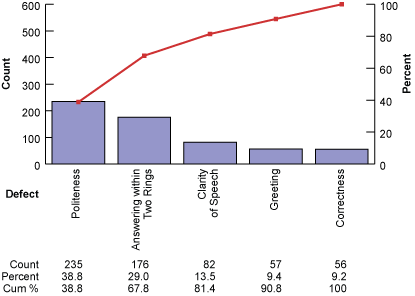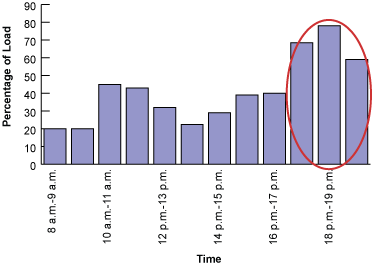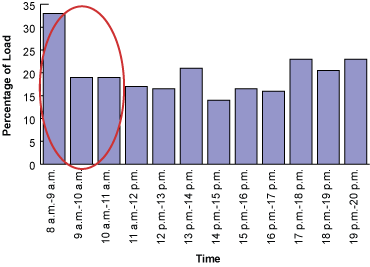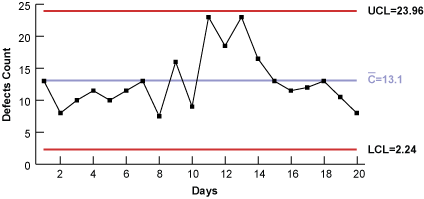
Telephone operators help establish a company’s image with the outside world. An operator with a clear, courteous voice who is capable of connecting the call to the right person can be a delighter for the caller, as well as the receiver.
Recently, a voice of the customer (VOC) survey revealed that operator response at a computer services company was poor and that customer satisfaction was low. To ensure better operator response, Six Sigma practitioners collected and analyzed benchmarking data from various companies and data on their company’s performance. With this information, the company’s telecom team was able to make valuable improvements. The project serves as an example of how a service process can be turned around using the principles of Six Sigma.
Identifying Problem Areas
Using the VOC survey results, the telecom team was able to understand the pain points in the service delivery of the phone operators. The team measured the responses of the telephone operators on these five delight parameters:
- Answering incoming calls – Operator responds within two rings
- Politeness – Operator responds politely
- Greeting – Operator uses standard greeting phrases
- Clarity – Operator speaks with clarity
- Correctness – Operator connects caller to the correct extension
In a sample of 943 calls made to all of the company’s Hyderabad, India, locations, 64 percent of the calls did not meet these five established parameters (Figure 1).

Reducing Workload
To improve operator performance in all five parameters, the telecom team started a Green Belt project called Response of Telephone Operators at all the company’s Hyderabad locations.
To begin, the team benchmarked the operators’ response pattern with those of competitors. The analysis revealed that there was a heavy workload on the company’s operators, especially during the peak hours. This workload grossly compromised their efficiency levels and response patterns. The team worked to reduce the load on the operators through regular load analysis and optimization. Figure 2 shows Operator A saddled with 77 percent of the total workload at one point during a shift because the operator is handling incoming calls, connecting outgoing calls and teleconferencing incoming calls from within the location. When work tasks are balanced, however, Operator B, who is only handling incoming calls, is responsible for a more reasonable 36 percent of the total workload (Figure 3).


To further improve the workload, the team took steps to reduce operator responsibilities. They did this by introducing an automated teleconference facility, which does not need operator intervention, and a direct inward dialing system.
The team also made efforts to encourage better phone habits from operators and other employees. For instance, they established awareness programs on telecom standards, policy and practice for all associates through a telecom awareness week and teleconference awareness programs at all locations. They also provided training on telephone etiquette for operators, as well as periodic stress management and aerobic training sessions. Rewards were given for the Best Operator of the Week. The team even organized get-togethers and picnics for operators as another form of stress reduction.
The central telecom team calculated the sigma level of the phone operator process for the company and its competitors on monthly basis. To ensure the process was under statistical control, defect levels were monitored by a random sampling of calls on a daily basis (Figure 4). The process was shown to be under statistical control.

Dramatic Improvement
The project showed that the workload of the operators was constraining their performance and affecting their efficiency levels. The improvement in operator response after the Six Sigma project was dramatic. The sigma level for the process rose from 2.6 to 3.8 for all the company’s Hyderabad locations. The defect rate in calls decreased from 64 percent to 5 percent, considerably improving the satisfaction level of both callers and receivers, much to the delight of internal customers. This has contributed to projecting a highly evolved image of the company and has set a new service delivery benchmark for this process.